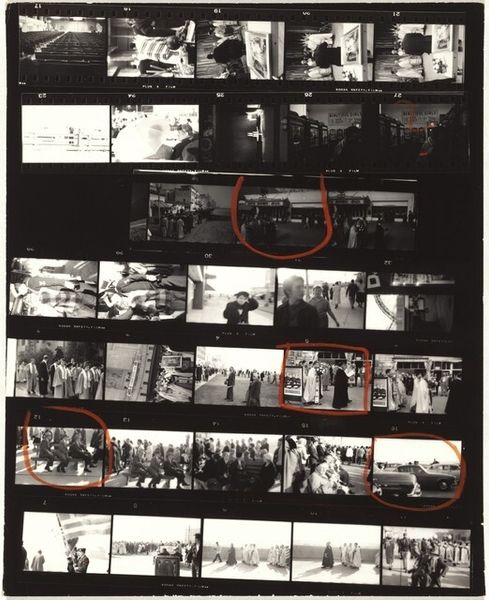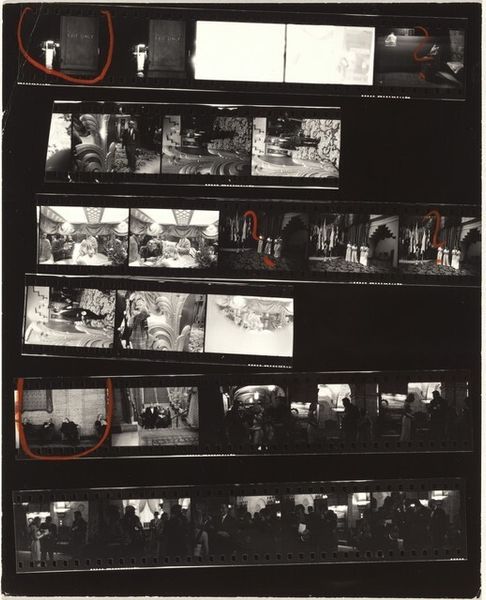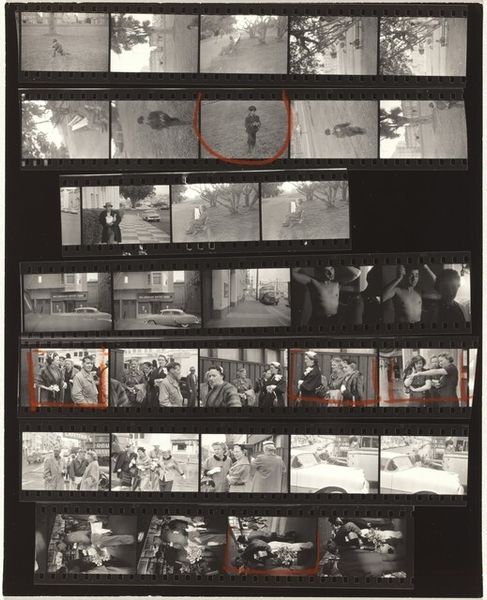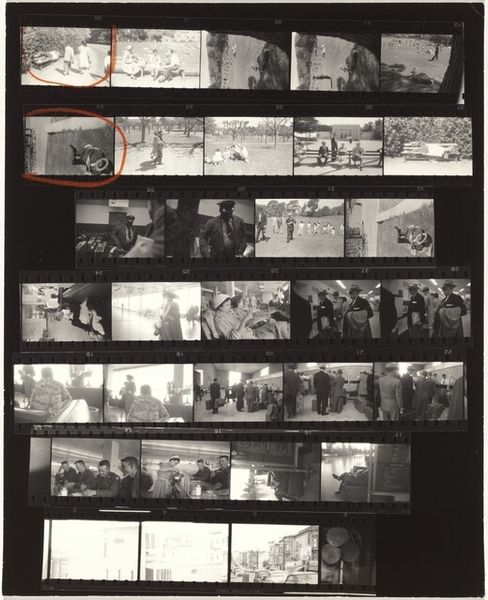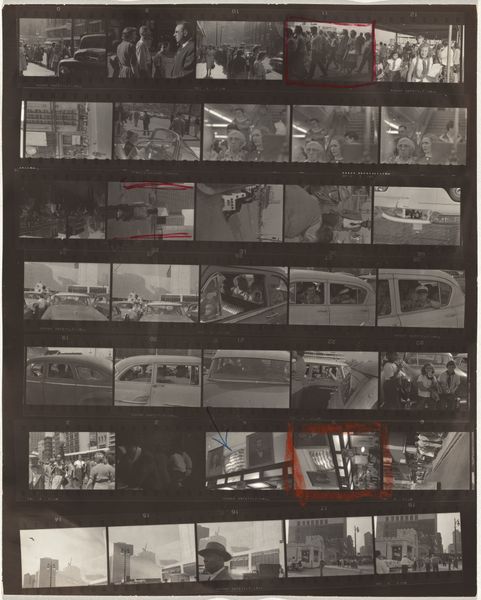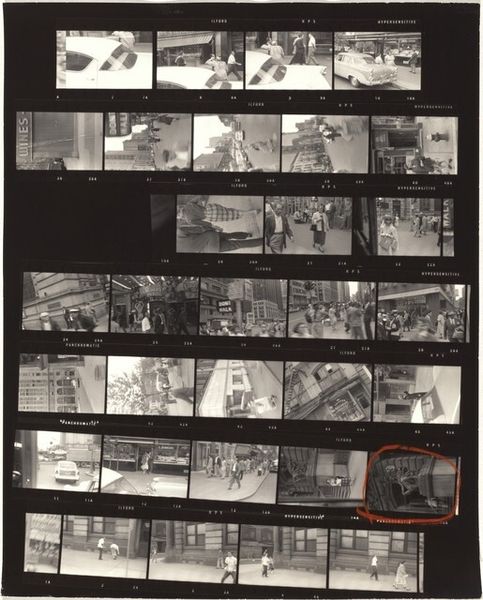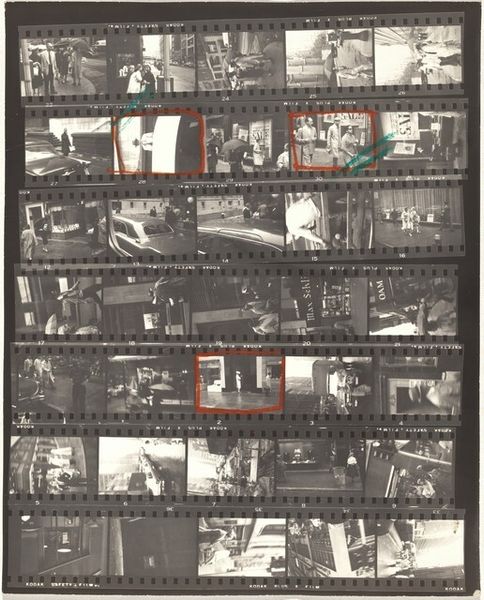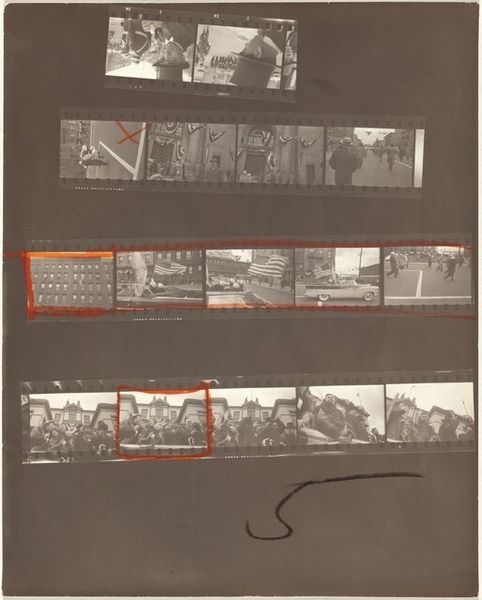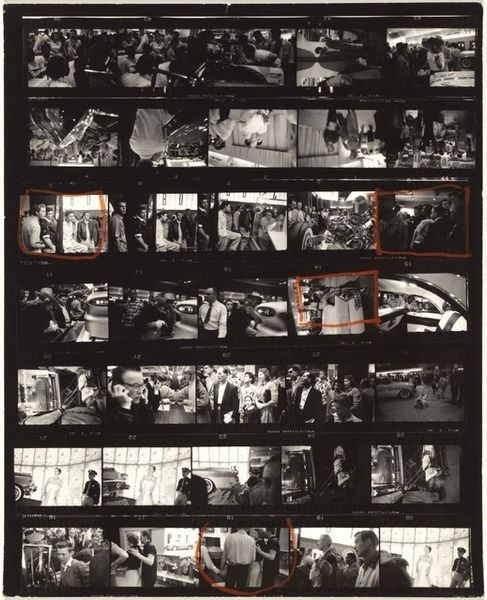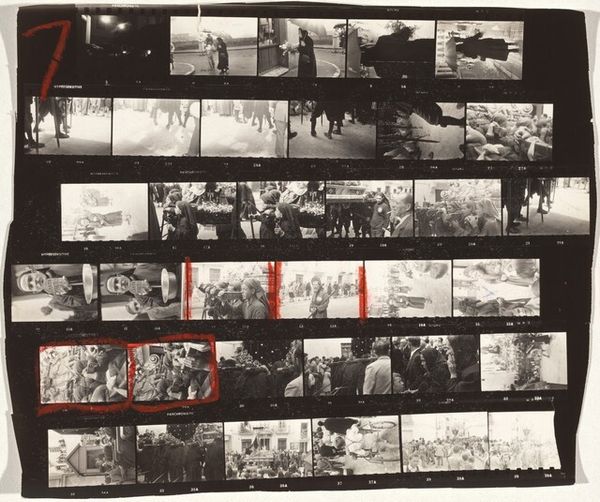
Dimensions: overall: 25.3 x 20.3 cm (9 15/16 x 8 in.)
Copyright: National Gallery of Art: CC0 1.0
Editor: This is Robert Frank’s "Guggenheim 122--New York City," taken in 1955. It's a contact sheet, a grid of small, black and white photographs capturing scenes of New York City. The close cropping, high contrast, and snapshot aesthetic feel very spontaneous, almost raw. What stands out to you in its composition? Curator: The formal elements at play are quite compelling. Notice the sequencing – the juxtaposition of bustling street scenes with isolated moments creates a rhythm, almost musical. The strong vertical lines of the buildings are interrupted by the horizontal flow of traffic and pedestrians. The light and shadow further fragment and unify the space, creating contrast. How does that formal relationship guide your eye across the work? Editor: I see what you mean! The light catches the shiny cars and darkens certain parts of the film strips which create an asymmetrical feel that doesn't resolve but does make my eye follow the grid up and down, pausing to read the single shots of crowds on the sidewalks. Are you saying the artist might not be communicating as much through imagery of subject matter, as they are through use of form and shadow? Curator: Precisely. While subject matter offers insight, here Frank uses compositional strategies to communicate more than simple observation. The formal tension elevates it beyond documentation. This creates new insight in relation to light, the rule of thirds and space. Now can you see how certain selections within the frame, like the man on the street with his hat and the woman looking over his shoulder in film-strip #6 create their own dialogue using the language of the formal relationships in that moment? Editor: Oh, definitely! I thought that one stood out! The composition is far from static! It’s fascinating how formal analysis reveals these dynamics beyond the surface content. Curator: Indeed. Looking beyond "what" it is and focusing on "how" the forms interact, opens doors to new insight. It helps refine our own compositional tools.
Comments
No comments
Be the first to comment and join the conversation on the ultimate creative platform.
